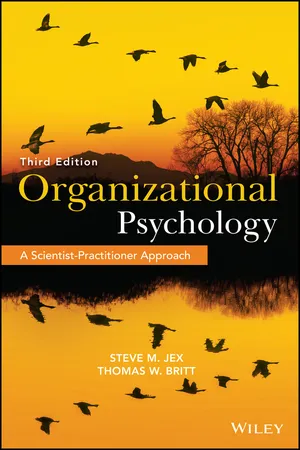Business
Maslow Theory
Maslow's Theory, often applied in business, is a psychological framework that suggests individuals have a hierarchy of needs. It posits that people are motivated to fulfill basic needs such as food and safety before progressing to higher-level needs like belonging, esteem, and self-actualization. In a business context, this theory is often used to understand employee motivation and satisfaction.
Written by Perlego with AI-assistance
Related key terms
Related key terms
1 of 4
Related key terms
1 of 3
10 Key excerpts on "Maslow Theory"
- eBook - ePub
- Christine Hodson(Author)
- 2014(Publication Date)
- Routledge(Publisher)
self-actualisation, the feeling that the individual has truly fulfilled their potential. Maslow felt that this was a state which we should all aspire to but one which few of us would reach. Unlike the lower steps on the pyramid these needs become reinforcers in themselves. Fulfilling one’s potential at this level is highly rewarding and the individual will always seek more self-actualisation.Commentary on Maslow’s approachThe theory had tremendous impact when it was first published. Until then there had been a tendency to regard the labour force as one unit of expense and to ignore the emotional needs of the workers. This is perhaps best illustrated by a quote from a textbook published in 1973 which was introducing Maslow’s theory and makes this comment about the impact it had upon management and organisational theory.More than the human relations movement it [Maslow’s theory] has acted as a counterweight to the demands of the industrial engineer to deskill and simplify work, for it has resulted in attention being paid not only to the physical and social environment in which a job is done, but also to the actual content of the work itself, since it is only in a task that satisfaction of the higher level needs may be obtained at work.Drake and Smith 1973: 36In other words higher level needs could be met in the workplace. Workers were fellow human beings and not just units of production. Intrinsic motivation and the fulfilment of growth needs were essential in motivating employees.Maslow’s work represents an optimistic view of human nature. However it has recently been open to criticism. For example people composed poetry in the concentration camps. Fasting has been used in many cultures as a tool to improve self-knowledge. Other individuals have chosen to starve for a strongly held political belief. People can be motivated by higher needs when lower ones are not being satisfied or they can choose the higher need before the lower one. How does this fit in to the hierarchy?In spite of these comments it is still the first four needs, physiological, safety, social and esteem needs, which are presumed to be met, either directly or indirectly, in the workplace. Wages, the environment in which we work, our contacts with our fellows and our status in the organisation are most likely to be manipulated to make us work harder, i.e. to motivate us to perform better. An illustration of the difficulty in applying Maslow’s theory can be seen in the controversy over the salaries offered to sports personalities. Which is the greater motivator for a professional footballer: £50,000 per week or an international cap? - eBook - ePub
- David Patterson, John Fay(Authors)
- 2017(Publication Date)
- Butterworth-Heinemann(Publisher)
The willingness of subordinates to apply themselves to productive work activities is linked to how much personal value they find in the work itself. The CSO’s challenge is to discover the rewards people find in their jobs and to integrate the rewards with work processes. This merging of personal desires with organizational needs is at once tricky and difficult. An understanding of motivational theory can help.Maslow’s Theory
Maslow’s theory (1943) holds that motivation is the cause of an organism’s behavior or the reason an organism carries out a particular activity. Fig. 3.1 illustrates the upward movement of human motivation. In the human organism, motivation involves both conscious and unconscious drives. Psychological theories hold that a primary level of motivation satisfies basic needs such as those for food, oxygen, and water. A secondary level of motivation meets social needs such as companionship and achievement. The primary needs must be satisfied before a person can attend to secondary drives.Figure 3.1 To the extent lower level needs are met, higher needs come into play.The American psychologist Abraham Maslow devised a six-level hierarchy of motives that determine human behavior. According to Maslow, human needs operate in an ascending hierarchy that begins with a natural striving to satisfy the physiological imperatives. In this hierarchy, which can be abstracted as a pyramid, a higher need does not provide motivation until all lower, more basic needs are satisfied. When a need is satisfied, it ceases to be a motivator.Physiological
The physiological needs are man’s basic requirements for nourishment, water, air, and rest. A person’s focus will be entirely on these needs for as long as he or she continues to be unmet. Once met, the individual’s focus shifts upward.Survival
At the next level is the requirement to be free from harm. The safety and security of the individual dominates. Like the underlying physiological needs, this level is concerned with survival and self-preservation.Love
At the third level, the individual strives for love and belonging. Affection and human relationships are the focal points. - eBook - ePub
Organizational Psychology
A Scientist-Practitioner Approach
- Steve M. Jex, Thomas W. Britt(Authors)
- 2014(Publication Date)
- Wiley(Publisher)
It is important to note that Maslow's theory was not designed specifically to explain behavior in the workplace. Rather, Maslow attempted to create a universal theory that would explain the driving forces behind all purposeful behaviors. It is also important to consider that the Need Hierarchy is based largely on Maslow's clinical observations rather than systematic empirical research. Despite these caveats, Maslow's theory has become quite influential in a variety of areas of psychology, including organizational psychology. Figure 9.1 presents the five need levels that comprise Maslow's Need Hierarchy. At the bottom of the hierarchy are physiological needs. This level represents the needs for food, oxygen, and water—attributes that are physiologically necessary to sustain life. These needs are at the lowest level because they will motivate behavior only if they are unsatisfied. Thus, a person who lacks such basic necessities will be motivated primarily to obtain them. The closest most of us have come to being motivated by physiological needs is a late-night excursion to a fast-food restaurant. In some parts of the world, however, basic physiological sustenance is one of the major forces driving not only work behavior, but many other behaviors as well. Figure 9.1 Maslow's Need Hierarchy When physiological needs are satisfied, a person then “moves on” to the next level in the hierarchy: safety needs, which include things such as shelter from the elements and protection from predators. As with all needs, Maslow proposed that safety needs would motivate behavior only to the extent that they are unmet. Compared to physiological needs, it is a bit easier to illustrate how safety needs may motivate work behavior - eBook - ePub
Employee Motivation in Saudi Arabia
An Investigation into the Higher Education Sector
- Rodwan Hashim Mohammed Fallatah, Jawad Syed(Authors)
- 2017(Publication Date)
- Palgrave Macmillan(Publisher)
1993 ).Khan et al. (2011 ) and Marques (2011 ) consider this theory to be the best known and most influential theory of motivation . Maslow’s theory has, in fact, had an immense influence to the point that many believe ‘most content-based motivation theories are based on Maslow’s (1954a ) Hierarchy of Needs …’ (Barbuto JR and Story 2011 , p. 25).Maslow’s Theory
Maslow’s Hierarchy of Needs
Maslow argues that motivation is best understood in terms of a Hierarchy of Needs , which for him are physiological , safety , love, esteem and self-actualisation (Bagozzi et al. 2003 ).Physiological Needs
The starting point for the Hierarchy of Needs model is the basic physiological needs , e.g. oxygen, food, shelter, water, rest, etc. (Netotea-Suciu et al. 2012 ). According to Maslow , physiological needs are the most important to employees and without those, it is impossible to motivate and satisfy them (Khan et al. 2011 ).Physiological needs are presumed to be igniting the process of satisfaction (Kenrick et al. 2010 ), with the other basic needs in the hierarchy being derived from the satisfaction of the physiological needs (Maslow 1954a ). Thus, they ‘serve as channels for all sorts of other needs as well’ (Maslow 1943 , p. 373). What this means is that the major motivation first and foremost would undoubtedly result from the physiological needs —the most prepotent of all human basic needs (Raus et al. 2012 ). All of the other needs such as getting out of danger (safety /security needs ), affiliating with others and being accepted (belongingness and love needs ), achieving, being competent and gaining approval and recognition (esteem needs ), and problem-solving and personal growth (self-actualising needs ) become secondary (Maslow 1943 - eBook - ePub
Psychology for Actors
Theories and Practices for the Acting Process
- Kevin Page(Author)
- 2018(Publication Date)
- Routledge(Publisher)
Maslow’s primary concerns became understanding and conceptualizing a psychology that covered the full range of human experience, especially the most mature and healthy of the population. Instead of concentrating on the mentally ill, as most psychologists previous to him had done, Maslow became interested in studying the psychological traits of the most highly developed and mentally healthy people he could find. This led him to develop a theory of human motivation that extended from feelings of deprivation and struggle with basic needs, such as food and shelter, through the entire spectrum of human endeavor to include those rare individuals who might change whole societies by their actions, such as great historical leaders or sainted religious figures. Effectively, his theory of motivation integrated the findings of behaviorism and Freudian psychoanalysis (and its extensions), along with the holism of Gestalt psychology and the functionalism of William James and John Dewey, to create a model that Maslow considered both holistic and dynamic (Maslow & Frager, 1987, p. 15).Following are some of the contributions Maslow made to Western psychology, many of which became foundational to the humanistic psychology movement, and later the transpersonal psychology movement, described in Chapter 1 .Maslow’s Hierarchy of NeedsMaslow postulated that human motivation is a multi-tiered affair, where one level of need must be satisfactorily fulfilled in order for the next higher level to emerge, creating a hierarchy, or predictable order of emergence, that is developmentally driven across the life span (Maslow, 1943a, 1943b). At the bottom of this hierarchy are what Maslow termed “physiological needs,” such as food, water, and oxygen, followed by sleep and the need for sex. Explained in the simplest of terms, if a person is starving or dying of thirst, it is unlikely that they will pay much attention to their needs for good company or conversation and position in the community until they have solved the problem of hunger or thirst. - eBook - ePub
- Institute of Leadership & Management(Author)
- 2012(Publication Date)
- Routledge(Publisher)
Session E
E Understanding behaviour at work
• 1 Introduction
Understanding what motivates people is usually quite difficult. There is no simple formula: you can’t say ‘treat people like this and you’ll get the best from them’.The subject has occupied many brilliant minds over the past fifty years or so. In the next few sections we are going to look at some of the most significant theories about the behaviour of people at work.These are:■ Abraham Maslow’s theory of needs. ■ Douglas McGregor’s ‘Theory X and Theory Y’. ■ Frederick Herzberg’s ‘two-factor’ theory. ■ Expectancy theory. ■ Hackman and Oldham’s essential job characteristics for internal motivation.You may feel that this is a lot to take in. However, you aren’t expected to remember the names, or even which theory is which. The important thing is to understand the ideas we discuss. Then in the remainder of the workbook we can use these ideas and see how far they can be applied to your kind of workplace.• 2 Maslow: needs theory
2.1. Maslow’s hierarchy of needs
What are the needs of human beings? What must they have in order to be happy, successful – or even just to survive? The American psychologist Abraham Maslow considered these questions and came to the conclusion that human needs can be thought of as being on several distinct levels:■ Physiological needs . If we are starving or have other fundamental needs like air, sleep and water, we become obsessed with satisfying these needs. Anything else is irrelevant at this time.■ Safety needs . Once these bodily needs are satisfied, we look for security, and stability in our environment.■ Love needs . Having fed ourselves and made ourselves safe, the next level of need comes into play. The ‘love’ or social needs are then important to us – affection, friendship and belonging.■ Esteem needs . After satisfying all these ‘lower’ needs, we look for esteem, self-respect and achievement.■ The need for self-actualization - eBook - ePub
Behavioural Research for Marketing
A Practitioner's Handbook
- Julian Adams(Author)
- 2022(Publication Date)
- Routledge(Publisher)
In the mid-20th century, psychologists were exploring the idea that we are motivated by a hierarchy of needs, starting with basic physiological needs extending to higher, more emotional needs. This approach was informed by the humanistic movement, in California, in the 1960s. Humanistic theory contends that both physiological and emotional needs are key motivational drivers. The emergence of the humanistic approach is an example of a paradigm shift, where unease about the emphasis on stimulus reinforcement in behaviourism and irritational thoughts in psychoanalysis, resulted in the advent of a new school of thought. A humanistic approach sits within the subjectivism research philosophy and makes three core existential assumptions:- We operate, to a greater or lesser extent, based on free will, which enables us to reach our potential.
- We are innately good and seek to improve the world we live in. Whilst this does seem to be an overly optimistic view of humanity, it is about overcoming hardship, pain and despair.
- We are motivated to be the best we can be, regarding psychological growth and fulfilment.
4.1.2 Reviewing hierarchy of needs theory
4.1.2.1 Abraham Maslow’s hierarchy of needs
From studies of monkeys, Maslow observed that there is an order of needs, where the most basic physiological needs (e.g. breathing, water and warmth) must be met before higher needs can be addressed (Maslow, 1943 , 1954). Needs are thought to be the motivators to behaviour, beyond basic physiological needs, Maslow suggested four further levels, starting with, safety, then love/well-being, esteem and finally self-actualisation or what Maslow later called transcendence.Maslow argued that we operate between levels by a process of homeostasis. Whereby, if physiological needs are not met, then the needs of the above levels will be ‘switched off’. Maslow referred to the needs at each level below self-actualisation as deficit-needs, whereby, if these needs are not met then there is a deficit. When the needs have been met then the motivational force is no longer in existence. As we develop, it is thought we progress up the levels, in theory, all the way to self-actualisation, although Maslow stated that not everyone would get to self-actualise. Maslow used different terms to explain this level, for instance, growth motivation which contrasts with the deficit motivation of the previous four levels. Additionally, Maslow referred to the needs at the uppermost level as being-needs, that is, needs that are necessary to ensure happiness, they include, morality, creativity, perfection and effortlessness. Should one be placed under extreme stress, it is possible to drop down to more basic survival-based levels. Interestingly, Maslow suggested that this could happen at not only an individual but a societal level. For instance, in times of war, a society might function at a basic safety or physiological level and only move up a level when the environmental conditions are much improved. - eBook - ePub
Tourist Experiences
Insights from Psychology
- Chris Ryan, Xiaoyu (Nancy) Zhang(Authors)
- 2024(Publication Date)
- Channel View Publications(Publisher)
As noted in the previous chapter, Abraham Maslow was born in 1908, the son of first-generation Jewish migrants to the United States who had come from Ukraine. At that time, several antisemitic gangs existed in the city, and the young Maslow learnt to live in Brooklyn facing their threats, experiencing relative deprivation and having the responsibility that came as the oldest child of seven. These experiences, combined with the lessons of Nazi Germany, shaped his subsequent thinking, but possibly even more important according to Hoffman (1988) was his relationship with his mother. Hoffman records that Maslow described his mother as being selfish, not capable of love, intolerant (particularly of Afro-Americans) and consequently his early family life was one of tension.Maslow is generally known today outside of his own field of psychology for his hierarchical model of motivation, which has been used in management (Lussier, 2019; Walsh, 2011), consumer buying in marketing (Groucutt & Hopkins, 2017) and in the area of tourist motivation (Pearce & Lee, 2005). The premise behind the theory is that there are basic needs that relate to physiological needs such as food, water and shelter. Once these needs are satisfied, the human becomes more concerned with physical and mental safety. If these two basic needs are met, then a path towards ‘self-actualisation’ becomes feasible. The human is both capable of, and desirous of love once the person feels healthy and safe. The higher needs are not necessarily replacing the basic needs, for these indeed are the basis of personal development, but the higher needs increasingly come to the fore. With feeling of love and a sense of belonging to a family, to a social group and possibly a place, and with the ability of being intimate with others, a sense of self-esteem is nurtured. In part, this might be associated with the sense of status that is attributed to the person by others, and such status may help create self-confidence, but for Maslow the primary issue was how people could grow to have a self-confidence based upon an honest and realistic self-appraisal with which one might be comfortable. This process is often represented by a diagram such as that shown in Figure 5.1 .Figure 5.1 Maslow’s hierarchy of needsThe figure is usually drawn as a triangle for a number of reasons (as shown in Figure 5.1 ). First, it is often stated to be hierarchical with each stage being built upon the other, thereby representing a series of stages as one climbs towards the highest level of self-actualisation. Second, Maslow in his writings implies that not everyone is capable of the higher stages, a belief drawn from his own personal experience derived from his view of his own mother and being a victim of antisemitic gangs in his youth. Furthermore, he explicitly states in his own book, Motivation and Personality - eBook - ePub
The Psychology of Behaviour at Work
The Individual in the Organization
- Adrian Furnham(Author)
- 2012(Publication Date)
- Psychology Press(Publisher)
Berry (1998: 240) noted:The fact that the theory is all embracing has attracted a great deal of attention. It has also been enthusiastically applied to the world of work. Predictably, perhaps, the research has been highly critical. Few have been able to find evidence of the five- (or two-) tier system (Mitchell & Mowdgill, 1976), and there is precious little evidence that needs are activated in the same order. It is not certain how, when or why the gratification of one stimulates or activates the next highest category. But it does seem that some of the ideas are most useful: individuals clearly have different needs, which relate to work behaviours. Organizations as a whole may be classified in terms of the needs that they satisfy (Furnham, 1992).Given that Maslow’s need-hierarchy theory has received so little support, how do we explain the interest it captured in industry? There are at least three ways to explain this. For one thing, Maslow’s terms have been publicized to an extent that they are incorporated in our everyday language. Self-actualization is now a word in the dictionary. Secondly, Maslow’s ideas have a humanistic appeal, and they make sense to us. The theory treats humans sympathetically and appeals to managers because it explains why some supposed work incentives may not operate as such. The theory says that employees are not simply interested in higher pay. There are other satisfactions at work, such as personal respect. Third, theories that have sweeping implications for work motivation provide a way for managers to make group interventions. Perspectives have been more readily adopted by management than individual-oriented theories of motivation because of the type of changes managers are able to make. They must do things that affect large numbers of people rather than single individuals. Theories like Maslow’s suggest ways in which they can.Alderfer’s ERG theoryAlderfer’s ERG theory is much simpler than Maslow’s theory, in that Alderfer specifies that there are only three - eBook - ePub
Strategic Reward and Recognition
Improving Employee Performance Through Non-monetary Incentives
- John G Fisher(Author)
- 2015(Publication Date)
- Kogan Page(Publisher)
In 1943 Maslow published a paper called ‘A theory of human motivation’. It proposed that there is a pecking order of motivational needs, which can be seen as a progressive scale, moving from the physiological to the quasi-spiritual. There are five needs. The lower need has to be satisfied before the next level of need can be satisfied.For example, physiological needs come first. Someone without food or water is unlikely to be motivated by a prestige car or a new job role until that person’s basic needs for physical survival have been met. The next level of need is security in the widest possible sense. This might include shelter, somewhere to live, job security and healthcare of some kind. The third need is for social interaction , not dissimilar to Murray’s idea of ‘affiliation’. This is a deep-seated need to belong to a group, whether social, religious or political – a sense of belonging. The fourth level of need is esteem or recognition of personal worth. This manifests itself in the need to be appreciated by peers and to excel in a particular skill that is valued by the group. The top level is self-actualization . In Maslow’s world this means being interested in one’s own personal growth or ambition and less concerned with the opinions of the social group. In concrete terms this could apply to a sportsperson, a career politician, a priest, an academic or an artist. Maslow describes this as follows:What a man can be, he must be. This need we may call self-actualization… It refers to the desire for self-fulfillment, namely, to the tendency for him to become actualized in what he is potentially. This tendency might be phrased as the desire to become more and more what one is, to become everything that one is capable of becoming.Although the hierarchy looks fixed and rigid, this is not supported by later research, and even Maslow himself admitted that for some people social acceptance was more important than say self-actualization. In addition, these needs are not constant and can change over time. But the value of the concept is that it gives managers in organizations the vocabulary and opportunity to recognize deep-seated needs in individuals in the workplace. By recognizing that an individual is largely driven by a particular need the manager can then satisfy that need in order to promote higher performance.
Index pages curate the most relevant extracts from our library of academic textbooks. They’ve been created using an in-house natural language model (NLM), each adding context and meaning to key research topics.
Explore more topic indexes
Explore more topic indexes
1 of 6
Explore more topic indexes
1 of 4









